
In September 2009, we introduced the Backblaze Storage Pod to the storage community. We then open-sourced the Storage Pod’s hardware design, and included a parts list, assembly instructions, and a cool 3D Storage Pod model. This enabled anyone with the desire and ability to create their own storage system. Over the past six years, we’ve continued to invest in our Storage Pods, and here are some of the highlights.
1) The Beginning: Petabytes on a Budget
We thought our Storage Pod 1.0 blog post, “Petabytes on a Budget: How to Build Cheap Cloud Storage,” would be read by a few thousand storage enthusiasts. We were wrong. Over one million people have read that post; it seems that open-sourcing the hardware design of a storage system was pretty popular.
2) The Storage Pod Idea Catches On
The “Petabytes on a Budget” post showed that it was possible to build reliable, yet economical, data storage. Almost immediately, individuals and organizations began building their own Storage Pods. Here are a few examples:
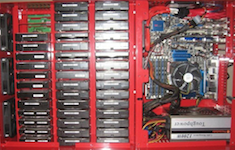 |
 |
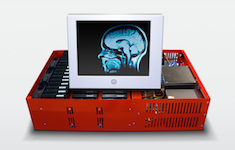 |
| In early October 2009, Don Honabach reported that he had built his very own Storage Pod which he used as an extreme media server. | Chloe and Greg built a couple of Storage Pods for the Geographic Information Network of Alaska (GINA) to hold satellite imagery data. | The Vanderbilt University Institute of Image Science modified the Storage Pod design to economically store medical images. |
3) More Secrets Revealed with Storage Pod 2.0
After nearly two years and many lessons learned, we announced Storage Pod 2.0 in “Petabytes on a Budget v2.0: Revealing More Secrets.” Pod 2.0 doubled the amount of storage to 135TB and doubled the speed, while lowering the overall cost of the system. And Storage Pod 2.0 was still five times cheaper than other data storage systems.
4) Lights, Camera, Action
Over the years, we’ve tried to give folks a look behind the scenes here at Backblaze, even if it wasn’t very pretty. Here are a couple of videos that demonstrate our commitment to openness.
Don’t let that picture of Tim fool you, the real stars of this video are the Storage Pods and the folks who work in our data center. By the way, as of Q2 2015 we’re now up to 45,000+ hard drives.
The Thailand drive crisis made hard drives scarce and expensive. In the video from April 1st, 2013 we finally told the real story behind how we farmed the hard drives needed to fill our Storage Pods.
5) Good Vibrations with Storage Pod 3.0
By early 2013, 4TB hard drives were available and the price had fallen enough so it was reasonable to use them in our Storage Pods. In our blog post: “180TB of Good Vibrations: Storage Pod 3.0” we calculated our cost of 180TB of storage to be about $0.06/GB. Today, the cost is closer to $0.04/GB thanks to the return of the drive pricing curve.
6) How Many Pods? How Much Data?
One key test of any technology is whether or not it can be scaled. In our case, that means how much customer data we can store and how many Storage Pods does it take to do it. Click on the images to see them in full size.
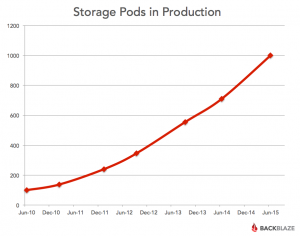 |
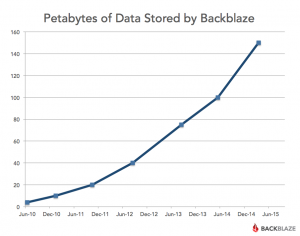 |
7) Down the Road and Back Again
| Storage Pod 4.0 | Storage Pod 4.5 |
| The post “Storage Pod 4.0: Direct Wire Drives” showed the change in direction in Storage Pod design we took in early 2014. We traveled down the direct-wire road for nearly a year before turning around. | Storage Pod 4.5 was based on the Storage Pod 3.0 design as we went back to our “backplane” roots as described in the post: “Storage Pod 4.5: Tweaking a Proven Design.” These are the Pods we currently build. |
8) Zettabyte Cloud Storage with Backblaze Vaults
| In early 2015 Backblaze announced; “Backblaze Vaults: Zettabyte-Scale Cloud Storage Architecture.” Each Backblaze Vault is comprised of 20 Storage Pods. Vaults are incredibly durable, scalable, and performant, and are the core of our cloud services. |
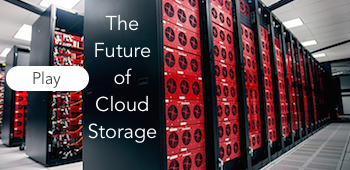 |
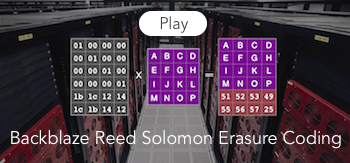 |
Backblaze Vaults are cool, but we didn’t stop there, we created our own implementation of Reed-Solomon erasure encoding to use on our Vaults. Then we open-sourced the Backblaze Reed-Solomon source code library on GitHub for anyone to use. |
What’s Next?
A quick trip down memory lane is always nice, but we’re already working hard on the future of Storage Pods, and more importantly, what awesome things we can do with the most economical data storage on the planet. Stay tuned…




